Rewiring your house could be necessary for upgrading unsafe electrical systems or remodeling. Correctly wiring keeps you, your family, and your belongings safe and the household appliances running efficiently. And after much research, we have gathered the crucial things you need to know about doing the rewiring as a DIY project.
Rewiring is no easy job, no matter how old or new the house is. There are crucial variables you should consider before rewiring your outdated wiring system, such as:
- Determining you need new wiring
- Learning the wiring process
- Establishing a plan before rewiring
- Temporarily relocating during the project
- Ensuring complete safety
- Managing the budget
If you don't want your old wiring system to develop fire risks, it would be best to conduct a rewiring project as soon as you know that you already need it. Please keep reading to learn more information regarding rewiring a house.
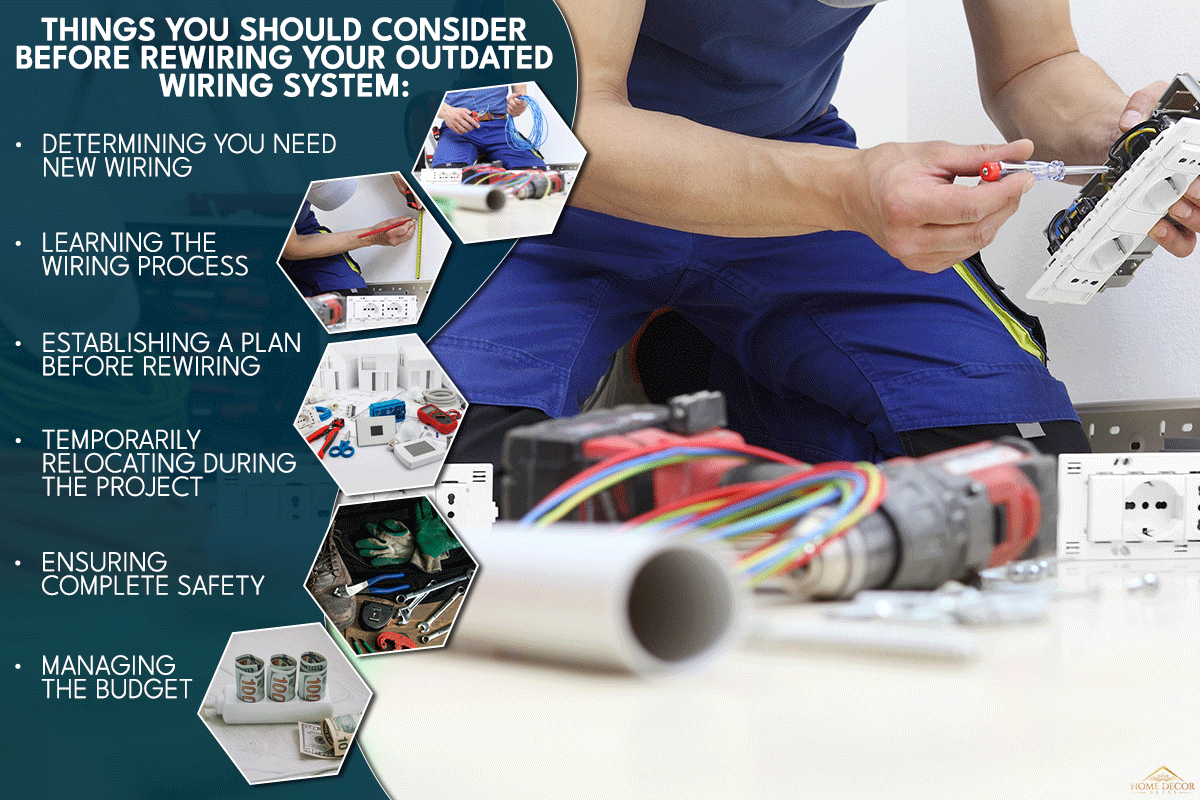
Here's What You Need To Know For DIY Rewiring A House
Between 2014 to 2016, 30% of residential fires were determined to have been caused by outdated or faulty electrical wiring. It might concern a homeowner if you've not inspected or updated any wiring systems in your house -it leaves you wondering if the wiring poses a risk for a house fire.
We sometimes add affiliate links and content that was curated and created by our team with the help of advanced ai tools to help showcase the best design styles.
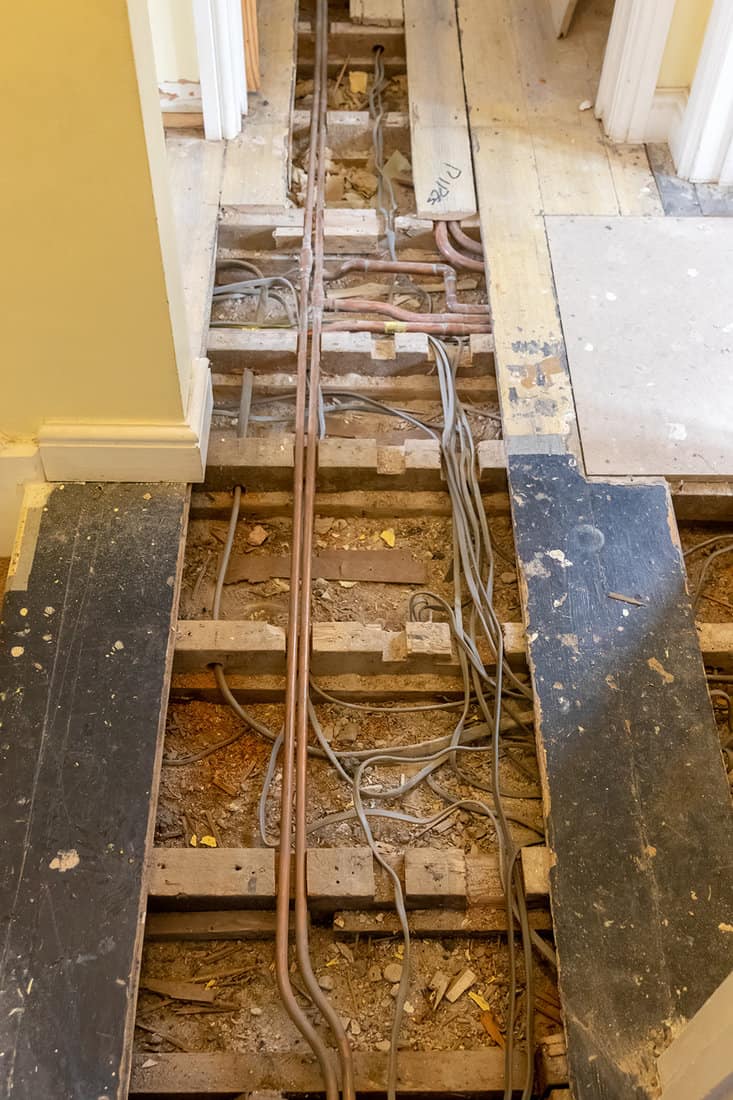
If your home has a dated or inadequate electrical system, rewiring it can also prove more efficient. It could stop nuisances like flickering lights and lower your energy consumption. However, this is a massive project that requires thorough planning and persistence. See the details below.
Determining You Need New Wiring
In most cases, replacing an outdated wire is only part of a rewiring job. Know that it also involves the electrical panel, especially if it is diminutive. In this case, you'll need to replace it with a new and bigger one that can accommodate all your electrical devices and appliances simultaneously.
Electrical Panel Sizing
The 60-amp panels standard in residences built before 1965 were enough for the lower electrical consumption of those households. A 60-amp panel is more than adequate for even the smallest homes in the modern era. However, modern users frequently overload these panels, creating a fire risk in standard-sized houses.
Good thing that nowadays, houses already have 100-, 150-, or 200-amp panels. If you have a smaller than 3,000 square feet house, a 100-amp panel can already sufficiently accommodate all your appliances.
On the other hand, if you have a larger home, it would be best to use the 200-amp panel, especially if your electrical devices are more energy-consuming.
Outdated Fixtures and Sockets
Furthermore, if you have your house or wiring installed past the 1980s, you'll only need a few repairs or upgrades. And examples of these are old light fixtures, old switches, and old sockets to replace. In this case, it would be best to incorporate advanced options or modern things, such as a socket containing USB ports.
Overloaded Circuits
Another example is when a light suddenly goes out when you switch on one of your larger electronic devices. It indicates an overloaded circuit, and loose wiring usually leads to overloading circuits.
Learning The Wiring Process
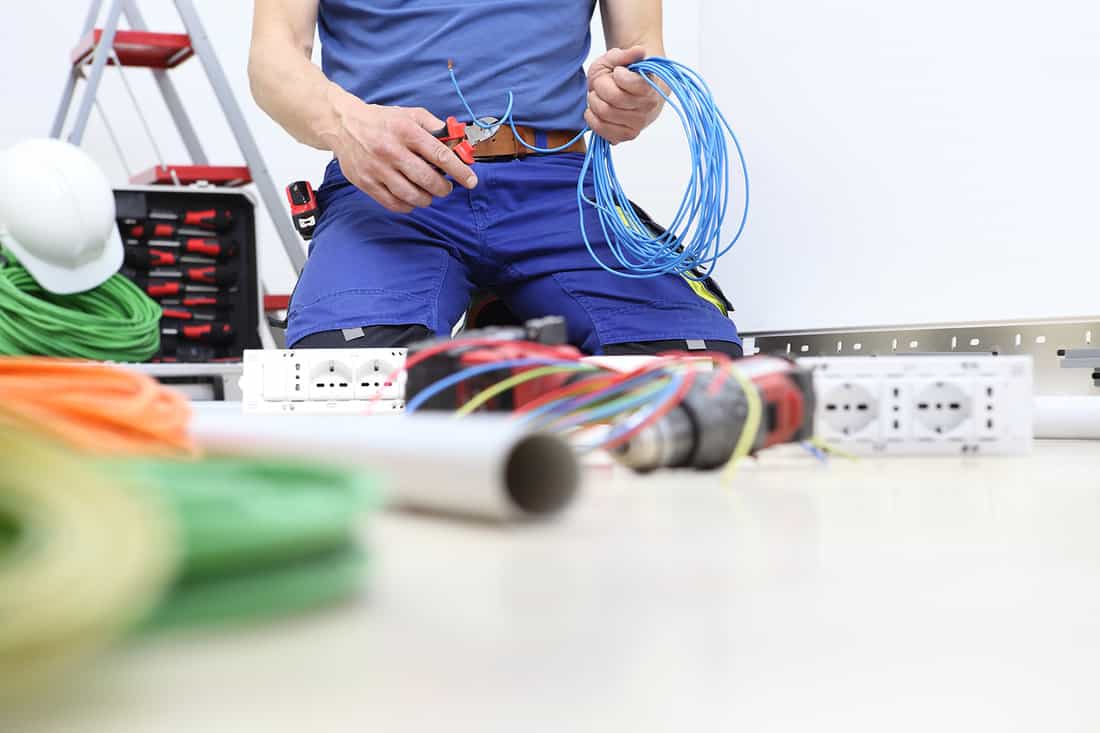
If you know how to conduct a DIY rewiring and are especially aware of the do's and don'ts of the process, then go for it. However, expect that the outcome might not be as good as what a professional can do.
Is It Difficult To Rewire A House?
It can be a time-consuming, labor-intensive job. To give you an idea, you'll do as much as cutting, cleaning, and covering holes, drilling, fixing wires, moving all the furniture, lifting the carpets, and possibly more.
Finally, even DIY rewiring projects must be inspected and approved by a professional electrician. So, once finished, be prepared to hire a professional to inspect the work. Note that some electricians will not agree to inspect or repair DIY work. As they must ensure a safe installation, they prefer to complete the work themselves.
Circuits will need to be inspected for correct function before you can wire them to a circuit breaker. Always label the circuits to be sure of the wiring pathways.
Furthermore, it is highly recommended to learn and follow electrical codes and regulations before doing anything with your wires. You'll need to ensure your upgrades are legal and well-documented. Keep in mind that most home buyers and renters prefer a licensed electrician who has wired a house.
Establish A Plan Before Rewiring
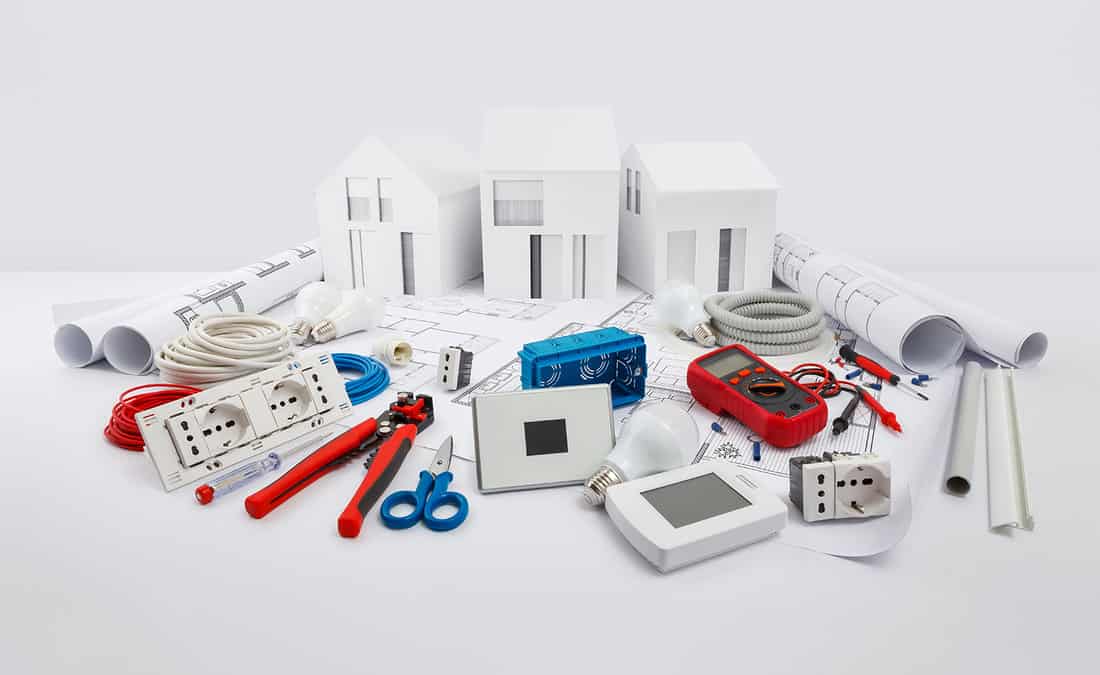
After learning the do's and don'ts of rewiring your house, it is time to plan or make an outline of how you will accomplish the task.
You can begin this step by listing all your electronic devices and appliances. Houses need rewiring every 20 years, so you should also include on the list the electronics you wish to add within the next two decades.
In this case, you can plan in your rewiring design where to place those appliances in the future. Plus, you need to identify clearly in your drawing where you wish to add the sockets, lighting fixtures, and appliances.
List of appliances and electronics:
Check the following for the example appliances and electronic devices you should consider writing in your inventory:
- Ceiling fans
- Washing machine
- Dryer
- Lighting
- Hot tub
- Sauna
- Swimming pool
- Water heater
- Computers
- HVAC system
- Refrigerator
- Microwave
- Oven
- Dishwasher
- Device charging stations
- Television and speakers
- Gym-related electronics, such as treadmill
- Hobby-related devices, like a sewing machine
You can easily create a simple outline of the rewiring design you want if you have already finished listing everything you own. Creating a plan will help you clearly visualize your goal and appropriately put anything in place.
As mentioned, before you execute your plan, it would be best to review the diagram by you and a licensed electrician. Doing this will let you know if you still need additions to the project and ensure that everything is safe to implement.
In addition, you must be sure that you are already content with it because adjusting will only mean additional time and costs if you have already started. You may think one alteration is simple, but that might lead to intricate wiring.
Temporarily Relocating During the Project
Aside from switching off the power source while working, it would be best also to consider moving out in the meantime. It will only not ensure your complete safety but also save you the trouble of not having access to the power.
Ensure Complete Safety
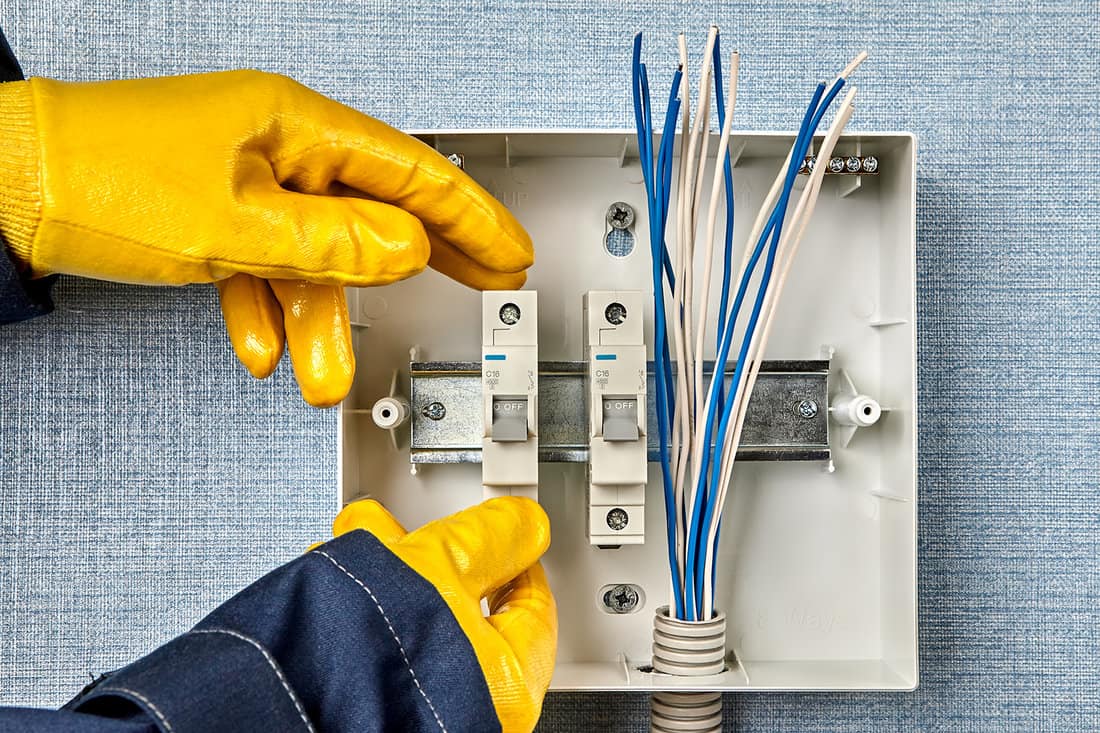
Before you conduct the rewiring process, completely switching off the power source would be best. Doing so stops the risk of accidental electrocution. This step is a must, regardless of whoever is running the job. Also, lock the electrical panel to prevent anyone from accidentally using it.
In addition, since you are doing a DIY rewiring, please keep in mind to wear protective gear. It includes goggles to protect your eyes while cutting wires, gloves when holding the wires, and a pair of boots to prevent slipping while you do the task.
Moreover, as you move from different areas in your house, consider checking the floor and surroundings for water or any liquids. The combination of water and electricity could lead to electrocution. So, as much as possible, dry any wet areas or repair leaks before rewiring.
Click here to check out this electrician working gloves on Amazon.
Managing The Budget
Rewiring a house can cost you between $1,500 to $10,000. The average rewiring expense is $2,100. Note that the costs will depend on house size, the number of rooms, wire quantity and quality, and the ease of installation.
Can You Rewire A House Without Removing Walls
It will depend on its layout and construction. Crawling space is usually available in most ceilings. And it typically has wiring that runs from the ceiling down through the wall frames to the general-purpose outlets and switches. The same can be true from below if your house rests on top of piers or a cellar.
Fortunately, if you can access the top or underside plate of your wall frame, you can use the old wire to draw via a chase wire, which you can then utilize to pull through new ones, allowing you to replace the old wires.
You'll only need to tear walls down if there is a layer of plaster or cement render protecting the wiring.
How Often Should You Check The Wiring In Your House?
The answer to this question will depend on several things, and they are:
- The age of your house
- The number of electronics or appliances your house has, mainly if it contains new major appliances.
- If you have just bought a previously-owned house
- You have done some serious house remodeling, which could have impacted the electrical system.
Most electricians advise doing so every three to five years. However, having a professional checkup on your system once a year is your best bet for ensuring it's doing its job correctly.
In addition, you can quickly test your Ground Fault Circuit Interrupter (GFCI) outlets by pressing the test/reset button twice a year.

